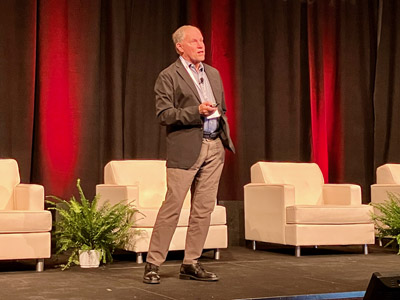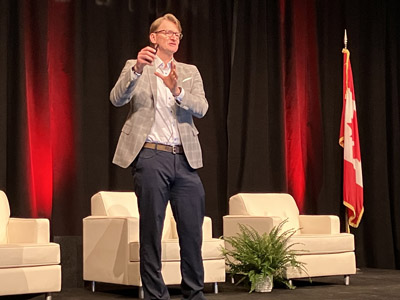Data from CCC Intelligent Solutions shows DRP claims were up 3% in Q3, while the average age of vehicles continues to rise.
More than 300 people attended this year’s MSO Symposium on Oct. 30, the largest attendance in the event’s 12-year history. For many in the industry, the annual gathering, focused on consolidation in the collision repair industry, kicks off the start of SEMA week in Las Vegas. Speakers offered an outlook for the economy, discussion about the flow of private equity investment in the industry, and the opportunities---and challenges---for business owners wanting to add additional shop locations.
Bart Mazurek, vice president of consulting services for CCC Intelligent Solutions' automotive services group, shared data at the event indicating direct repair claims were up 3% in the third quarter of this year---good news for collision repair businesses that focus more on DRP work.
Mazurek said higher prices and lower availability of new vehicles in recent years has contributed to a continued rise in the average age of vehicles in the U.S.
“If you look at 2019, only 34% of vehicles were seven years and older, but now we’re up to 42% of vehicles being over seven years, and that has an impact on total losses,” he said. “Older vehicles are obviously easier to total out.”

The percentage of non-comprehensive claims resulting in a total loss had dipped down to as low as 18.2% in the summer of 2022, according to CCC data, but that has rebounded to above 20% every month this year.
Speaking on the day that General Motors became the final automaker to announce a tentative agreement with the United Auto Workers, Mazurek downplayed any significant impact the six-week strike had on collision claims.
“As we looked at national implications, especially when it comes to cycle time, we didn't notice any differences or any uptick in cycle time,” he said. “Sure, we’d heard some anecdotal information on a regional basis of parts availability issues, but generally speaking, we’ve been told that dealership groups had been stocking up on parts, focusing on the 60-day market. If they could [have] inventories to get through 60 days, there wouldn’t be an impact on cycle time, and I think that’s held firm to date.”
Also during the MSO Symposium, David Roberts of Focus Advisors said there are now 17 private equity firms with investments in collision repair operations.
“And there are at least 12 more who are knocking at the door,” Roberts said. “If you’re an independent MSO out there today and you’ve got four or five or more shops, they’ve knocked on your door.”
He said realistically, maybe four of the 12 will make an acquisition while they others will not, perhaps deciding it’s a business they don’t know enough about. But still, the interest means it’s not too late for a smaller MSO to get a private equity buyer to help them grow.
“I think that they are looking for a five- or six-shop MSO to get started with,” Roberts said. “If you’re one of those high performers, where you’re doing $25 million out of five shops and you’ve got 18% EBITDA (earnings before interest, taxes, depreciation and amortization), you’re going to get a really nice offer. If you are smaller than that or you don’t have those kinds of margins, most importantly, you have to have a great management team that is going to stick with the business. Management may be the most important part of the profile of any [business] selling to a private equity firm.”
What are buyers paying for collision repair businesses? Roberts said it varies on the buyer and the size of business being acquired, but the good news is “values are holding steady and in some cases rising.”










John Yoswick